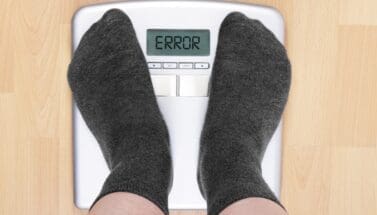- Discover the benefits of rest and recovery.
- Explore the concept of active rest and how to implement it.
- Learn new resting tips to maximize muscle recovery and weight loss.
The Importance of Rest and Recovery for Muscle Growth and Weight Loss
Though often an afterthought, rest serves an essential function in any effective workout regimen. Overtraining and not resting can lead to injuries, which stalls progress and can be a major bummer to your morale. If rest isn’t part of your daily routine, it can be easy to over-exert yourself. While working out is essential in leading a healthy life, there is such a thing as overdoing it.
Balance is key in any aspect of life, but striking balance in a workout routine is often a process of trial and error. At Rock’s Discount Vitamins, we’re here to help minimize your mistakes, so, next time you’re gearing up for a workout, listen to your body, you may just need the day off.
How Rest Helps Muscle Growth
Believe it or not, rest days are just as important as the time you spend working out. In fact, there are an abundance of benefits that come with resting. From giving your body time to recover, minimizing the risk of injuries, reducing muscle fatigue, and helping muscle growth, taking the day off may be just what you need to fully reach your fitness goals.
Rest and Muscle Building
When working out, whether it be weightlifting, calisthenics, or playing your favorite sport, you’re engaging your body in high-stress activities that lead to small microscopic tears in your muscles. When you rest, you let your body heal and recover, allowing for new and bigger muscles to form. So, if you wanna maximize gains, it’s important to incorporate rest into your routine.
Minimizes the Possibility of Injuries
Fatigue and muscle injuries are closely related, with lack of rest often being the root cause of both. Not giving your body the proper rest it deserves often leads to poor form, lack of concentration, and traumatic muscle injuries such as a pulled muscle, strains, contusions, lacerations, tendonitis, and even shin splints. Don’t risk being out for a long time, and take a rest every now and then.
Reduces Muscle Fatigue
It’s completely normal to feel tired after a workout session, but ignoring rest days can lead to chronic muscle fatigue. Muscle fatigue is defined as a depletion in your ability to generate force to a point where you cannot perform your routine at an optimal level. Extreme muscle soreness as a result of muscle fatigue can be a sign you’re over-exerting yourself, often leaving you tired before you even work out. So next time you feel extra sore, or can’t finish that last set, take a break, your muscles will thank you.
How Often Should You Be Resting?
Muscle recovery for growth is required for any training regiment to be effective. Without rest, you may notice a dip in your performance, a plateau in your gains, and even a negative impact on your workout, like not being able to finish them. But how often should you be resting? The American College of Sports Medicine (ACSM) recommends that you should be resting a minimum of 48 hours in between high-intensity workouts of the sample muscle group. This means that if you work out your chest or shoulders one day, you should not go and exercise that same muscle group the following day. You should also be resting at least one to two days per week to allow for your body to recover.
Tips for Resting
A good thing you can implement into your workout routine is working out every other day. For example, you can work out Monday, Wednesday, Friday, and Sunday. Another workout split could be to hit all your muscle groups, say, Monday (chest and shoulders), Tuesday (back and arms), Wednesday (legs), skip Thursday, and then begin your routine again. Lastly, you could also only work out on weekdays and take the weekends off for yourself. Whatever you choose to do, just remember that rest is key to meeting your weight loss and muscle-building goals.
Implement Active Rest
A good way to implement muscle recovery into your workout routine is through active rest. This allows you to engage in light physical activities without the added risk of injury or over-exerting yourself. Active recovery activities are especially recommended after an intense workout and should last somewhere between 30-60 minutes. This is a great way to allow your muscles to recover for growth without feeling like you’re doing anything. Activities include:
- Light stretching
- Long walks
- Yoga
- Swimming laps
- Hiking
Rest and Recovery for Weight Loss
While it may seem counterintuitive, rest plays an important role in meeting your weight loss goals. Implementing a set rest and recovery routine can make meeting your weight loss goals easier. From regulating hunger and appetite and inducing hormones, rest helps keep your appetite at bay. Additionally, research suggests that poor sleeping habits are associated with poor food choices. So if your sleep schedule is out of whack, it may be good to implement a set sleep routine—it may just be the missing step in your weight loss routine!
Rest and Reset!
No trendy diets, no flash-in-a-pan fake promises, or some phony outdated fad—just quality supplements. For your wellness needs choose Rock’s Discount Vitamins for the best results. Visit a location near you today!





